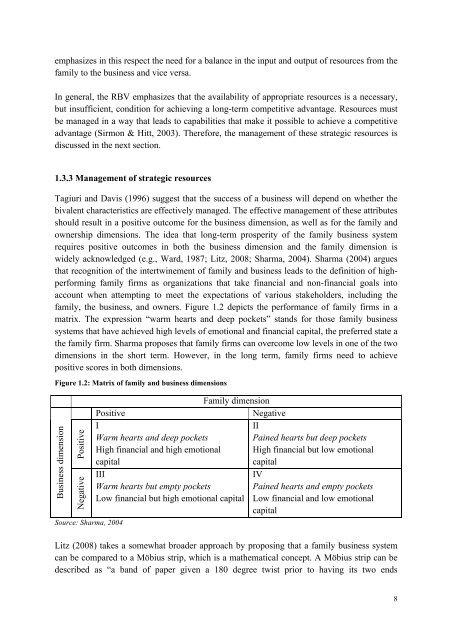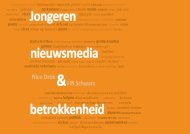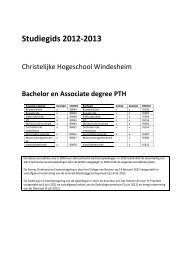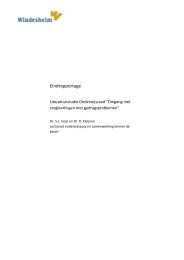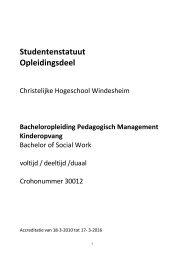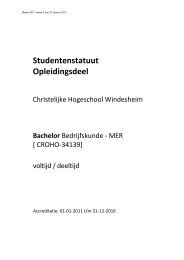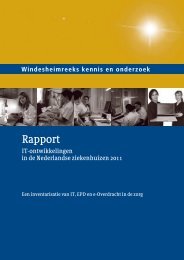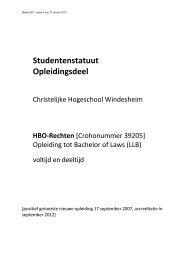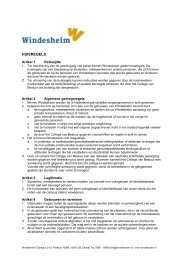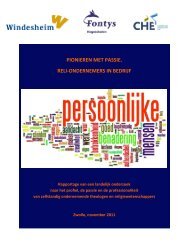Strategic Resources and Family Firm Performance - Windesheim
Strategic Resources and Family Firm Performance - Windesheim
Strategic Resources and Family Firm Performance - Windesheim
Create successful ePaper yourself
Turn your PDF publications into a flip-book with our unique Google optimized e-Paper software.
emphasizes in this respect the need for a balance in the input <strong>and</strong> output of resources from the<br />
family to the business <strong>and</strong> vice versa.<br />
In general, the RBV emphasizes that the availability of appropriate resources is a necessary,<br />
but insufficient, condition for achieving a long-term competitive advantage. <strong>Resources</strong> must<br />
be managed in a way that leads to capabilities that make it possible to achieve a competitive<br />
advantage (Sirmon & Hitt, 2003). Therefore, the management of these strategic resources is<br />
discussed in the next section.<br />
1.3.3 Management of strategic resources<br />
Tagiuri <strong>and</strong> Davis (1996) suggest that the success of a business will depend on whether the<br />
bivalent characteristics are effectively managed. The effective management of these attributes<br />
should result in a positive outcome for the business dimension, as well as for the family <strong>and</strong><br />
ownership dimensions. The idea that long-term prosperity of the family business system<br />
requires positive outcomes in both the business dimension <strong>and</strong> the family dimension is<br />
widely acknowledged (e.g., Ward, 1987; Litz, 2008; Sharma, 2004). Sharma (2004) argues<br />
that recognition of the intertwinement of family <strong>and</strong> business leads to the definition of highperforming<br />
family firms as organizations that take financial <strong>and</strong> non-financial goals into<br />
account when attempting to meet the expectations of various stakeholders, including the<br />
family, the business, <strong>and</strong> owners. Figure 1.2 depicts the performance of family firms in a<br />
matrix. The expression “warm hearts <strong>and</strong> deep pockets” st<strong>and</strong>s for those family business<br />
systems that have achieved high levels of emotional <strong>and</strong> financial capital, the preferred state a<br />
the family firm. Sharma proposes that family firms can overcome low levels in one of the two<br />
dimensions in the short term. However, in the long term, family firms need to achieve<br />
positive scores in both dimensions.<br />
Figure 1.2: Matrix of family <strong>and</strong> business dimensions<br />
Business dimension<br />
Positive<br />
Negative<br />
Source: Sharma, 2004<br />
Positive<br />
<strong>Family</strong> dimension<br />
Negative<br />
I<br />
II<br />
Warm hearts <strong>and</strong> deep pockets Pained hearts but deep pockets<br />
High financial <strong>and</strong> high emotional High financial but low emotional<br />
capital<br />
capital<br />
III<br />
IV<br />
Warm hearts but empty pockets Pained hearts <strong>and</strong> empty pockets<br />
Low financial but high emotional capital Low financial <strong>and</strong> low emotional<br />
capital<br />
Litz (2008) takes a somewhat broader approach by proposing that a family business system<br />
can be compared to a Möbius strip, which is a mathematical concept. A Möbius strip can be<br />
described as “a b<strong>and</strong> of paper given a 180 degree twist prior to having its two ends<br />
8


